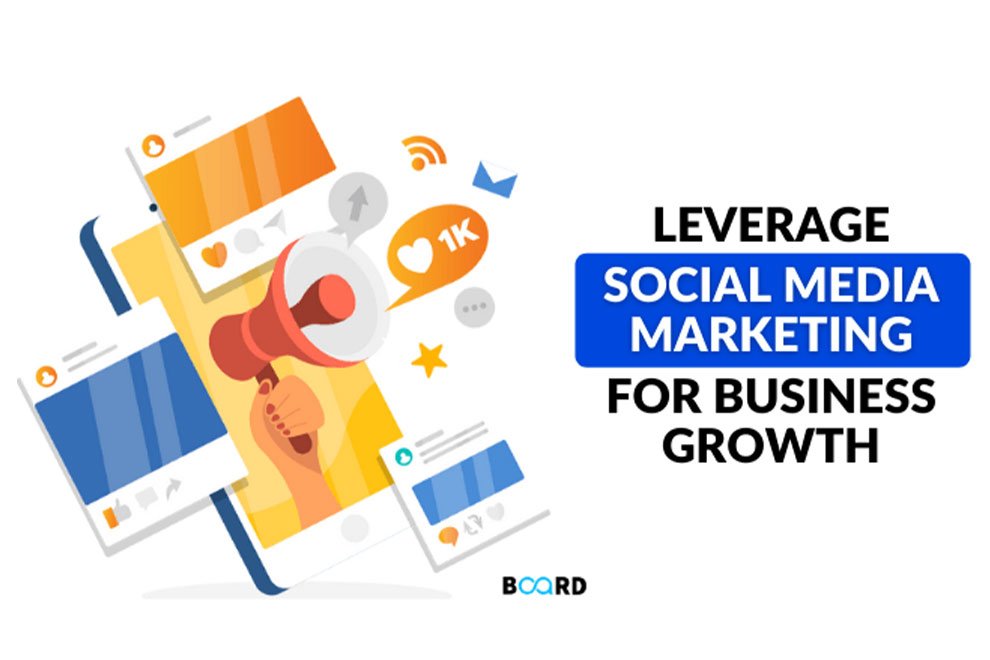In the digital era, social media has emerged as a powerful tool for businesses aiming to expand their reach, engage with customers, and drive growth. Platforms like Facebook, Twitter, Instagram, and LinkedIn offer unique opportunities for brands to connect with their audience in a direct and personal way. The interactive nature of social media not only facilitates communication but also enables businesses to gain valuable insights into customer preferences and behavior. This dynamic environment demands a strategic approach to harness the full potential of social media for business growth.
The significance of social media in today’s business landscape cannot be overstated. With billions of active users worldwide, these platforms provide an unparalleled opportunity for brands to increase visibility, build relationships, and promote their products or services. However, the vastness of the social media world also presents challenges, including intense competition and the constant need for content that resonates with the target audience. Success in this arena requires a deep understanding of social media dynamics, a clear strategy, and the ability to adapt to the ever-changing digital trends.
Crafting a Social Media Strategy:
Developing a comprehensive social media strategy is the first step toward leveraging these platforms for business growth. This involves setting clear objectives, identifying the target audience, and choosing the right platforms to focus on. Goals can range from increasing brand awareness and generating leads to driving website traffic and boosting sales. Understanding the audience’s demographics, interests, and online behavior is crucial for creating content that engages and converts.
A successful social media strategy also requires consistency and planning. This means regularly posting content that aligns with the brand’s voice and values, as well as engaging with followers through comments, messages, and shares. Utilizing a content calendar can help businesses organize their social media activities and ensure a steady stream of relevant content. Additionally, monitoring metrics such as engagement rates, follower growth, and conversion rates is essential for evaluating the effectiveness of the strategy and making necessary adjustments.
- Thanks to Laura Allen, Senior E-commerce Support Specialist at Splash About
Engaging Content Creation:
At the heart of social media success lies engaging content. This content must not only capture the audience’s attention but also provide value, whether through information, entertainment, or inspiration. The type of content can vary widely, from blog posts and videos to infographics and live streams, depending on the platform and the audience’s preferences. Authenticity and creativity are key to standing out in a crowded social media landscape.
Interactive content, such as polls, quizzes, and contests, can further boost engagement by encouraging participation and fostering a sense of community among followers. User-generated content, including reviews, testimonials, and customer photos, can also enhance credibility and trust in the brand. By focusing on creating high-quality, relevant content, businesses can attract more followers, increase engagement, and ultimately drive growth.
- Thanks to Jon Lynn, founder of My Office Pod
Leveraging Paid Social Media Advertising:
While organic reach on social media can be limited, paid advertising offers a way to amplify visibility and reach a larger, more targeted audience. Social media platforms provide sophisticated advertising tools that allow businesses to tailor their ads based on demographics, interests, behaviors, and more. This level of targeting ensures that ads are shown to users who are most likely to be interested in the brand’s products or services, increasing the chances of conversion.
Paid social media advertising can take many forms, including sponsored posts, display ads, and video ads. A/B testing different ad formats, messages, and targeting options can help businesses identify the most effective strategies for their goals. With the right approach, paid advertising can complement organic efforts, driving significant traffic and leads while providing valuable data on customer preferences and behavior.
- Thanks to Selda Kaplan, CEO & Co-Founder at TaxLeopard
Analyzing and Adapting:
The fast-paced nature of social media requires businesses to continuously analyze their performance and adapt their strategies. Social media analytics tools offer insights into various metrics, such as engagement rates, reach, and click-through rates, allowing businesses to understand what works and what doesn’t. This data is invaluable for refining content strategies, optimizing ad campaigns, and improving overall social media performance.
Staying up-to-date with the latest social media trends and platform updates is also crucial for maintaining relevance and engagement. This may involve experimenting with new content formats, exploring emerging platforms, or adopting new features, such as Instagram Stories or Twitter Spaces. By being flexible and responsive to changes in the social media landscape, businesses can sustain growth and remain competitive.
- Thanks to Charles Veprek, Director at It-Amg
Building Community and Fostering Loyalty:
Social media transcends mere advertising; it’s a dynamic platform for building a community around your brand and fostering customer loyalty. By actively engaging with followers, responding to comments, and participating in conversations, businesses can create a sense of belonging and loyalty among their audience. This direct interaction not only humanizes the brand but also builds trust and credibility, which are crucial for long-term relationships.
Social media allows businesses to showcase their values and culture, further strengthening the connection with their audience. Highlighting social responsibility initiatives, celebrating milestones, and sharing behind-the-scenes content can make followers feel like part of the brand’s journey. By prioritizing community building and loyalty, businesses can turn their social media followers into brand advocates, amplifying their reach and impact through word-of-mouth promotion.
- Thanks to Holly Darani, the Content Head at UNAGI Scooters
Conclusion:
Leveraging social media for business growth requires a strategic approach, creative content, and a willingness to adapt to the ever-evolving digital landscape. By developing a comprehensive social media strategy, creating engaging content, utilizing paid advertising, and continuously analyzing performance, businesses can harness the power of social media to expand their reach, engage with customers, and drive growth. In the digital age, social media is not just an optional marketing channel but a critical component of a successful business strategy, offering endless opportunities for connection, insight, and expansion.
Also Read: How social media Effects communication?










